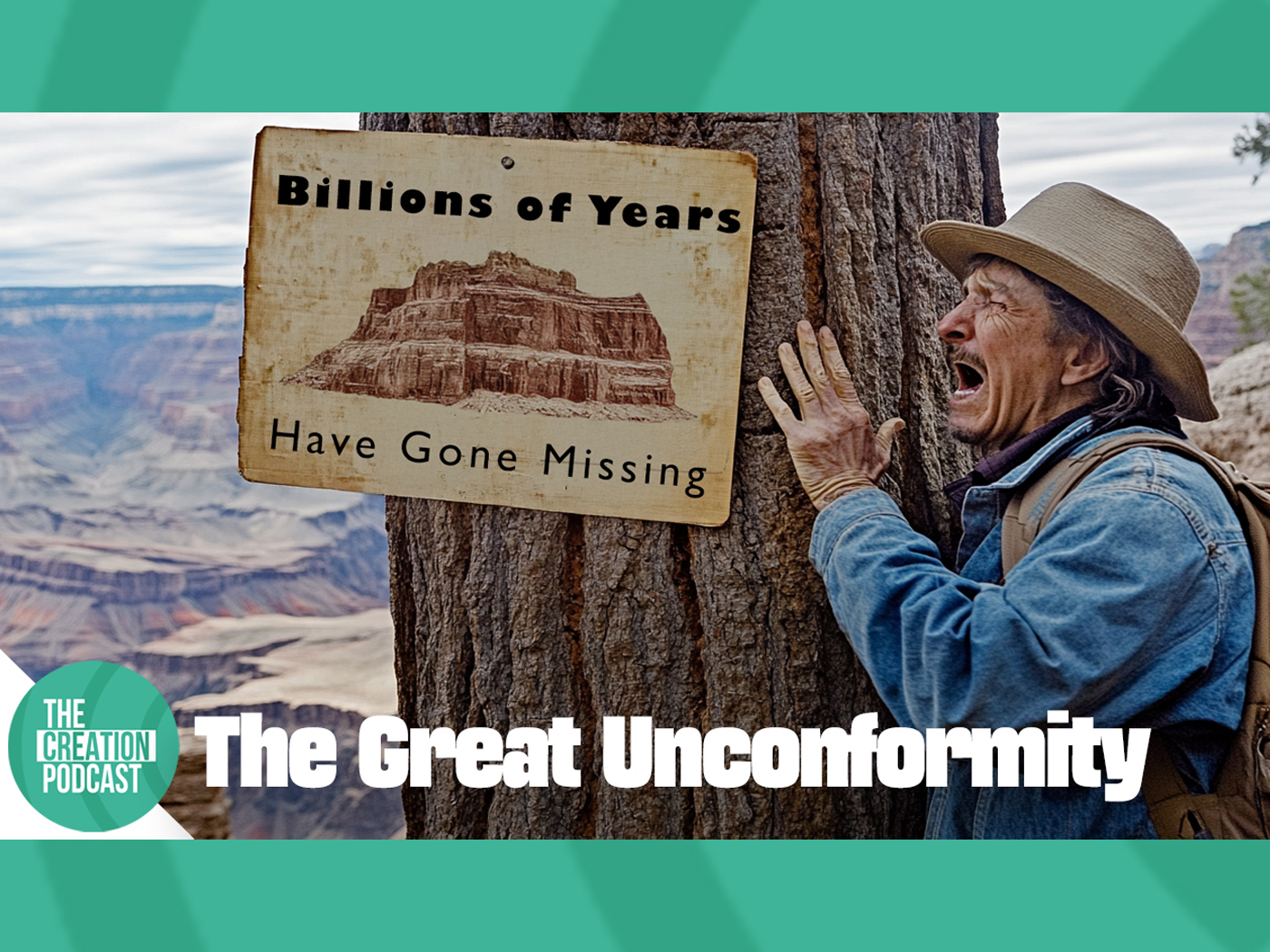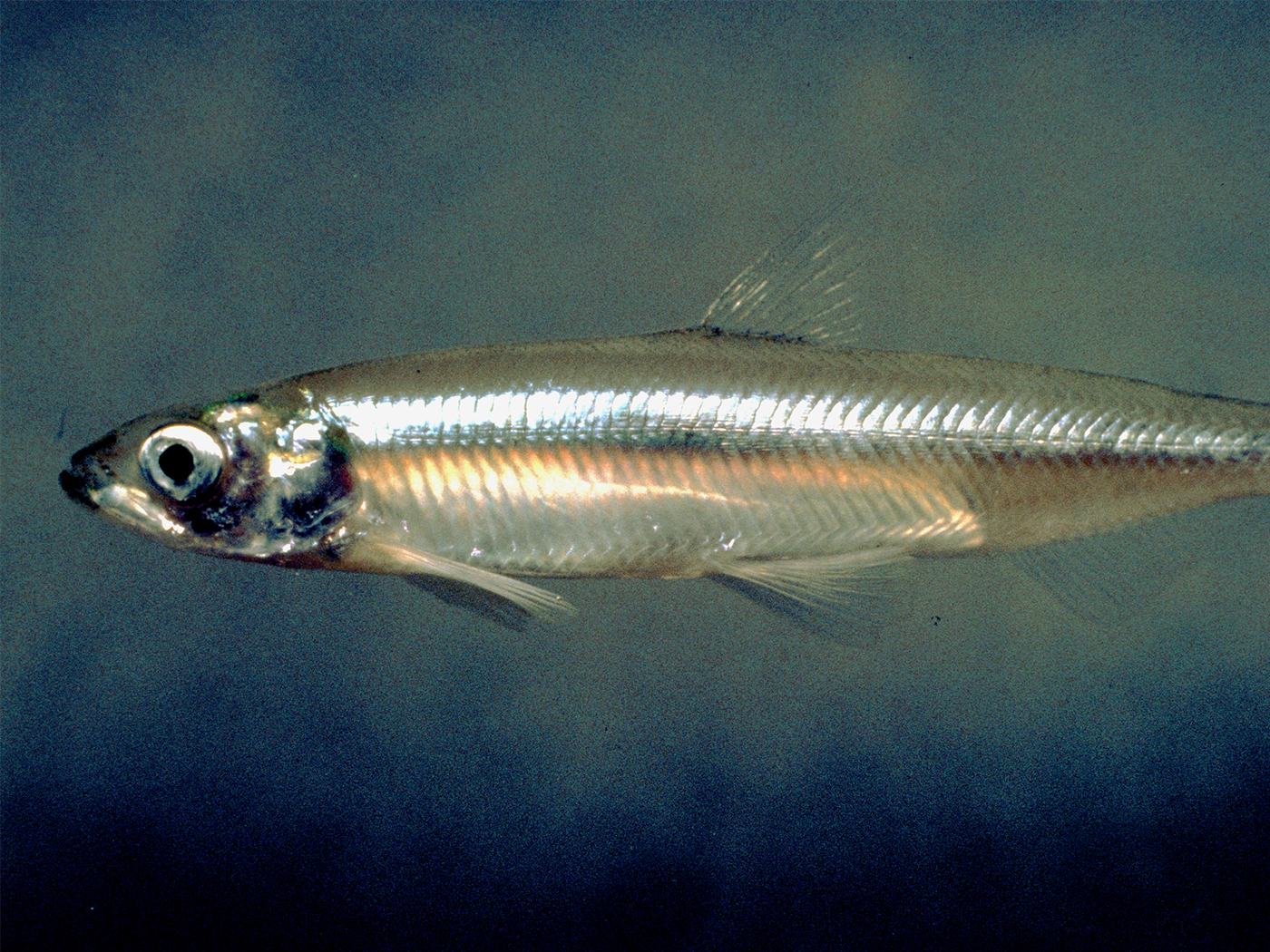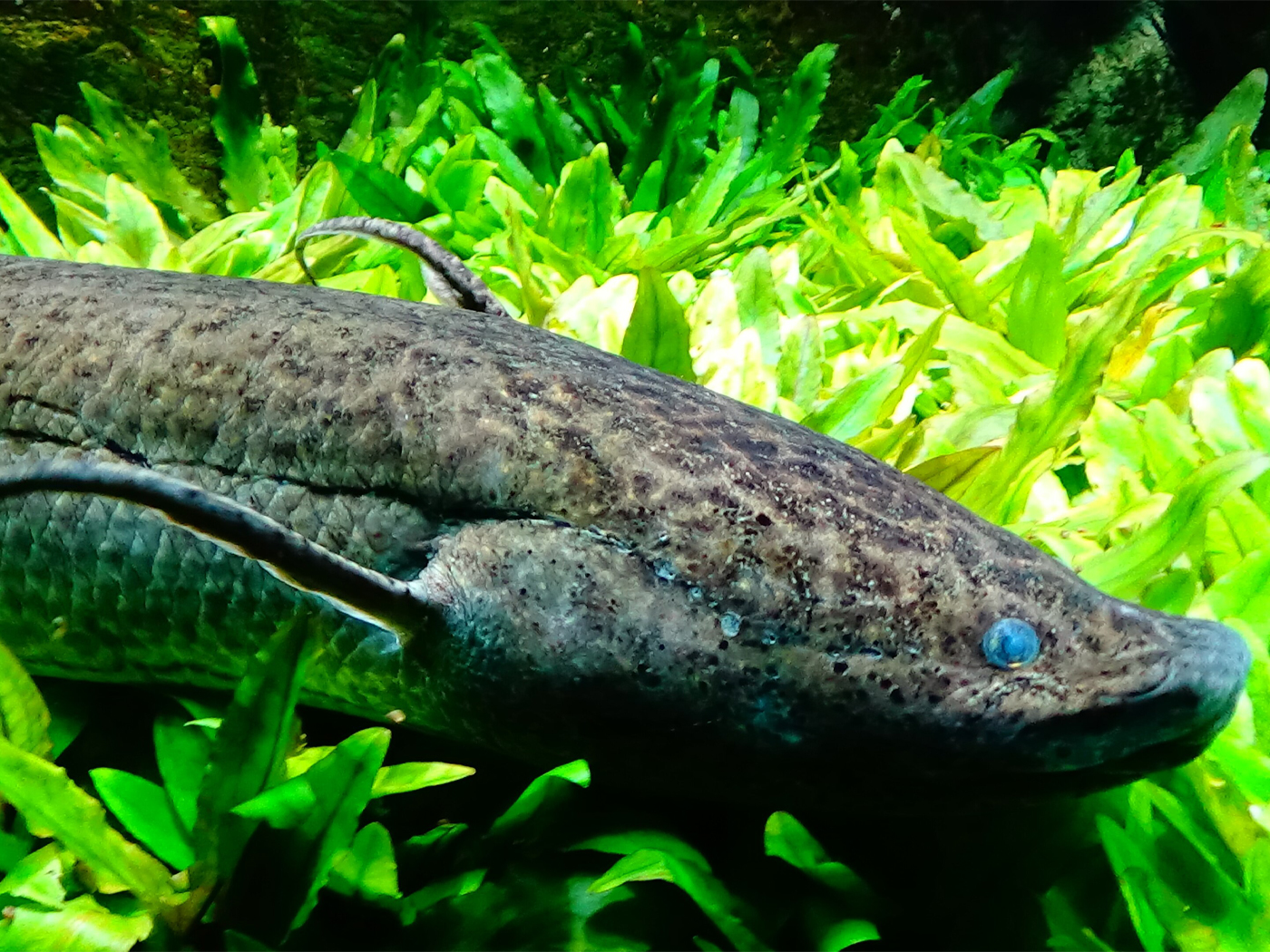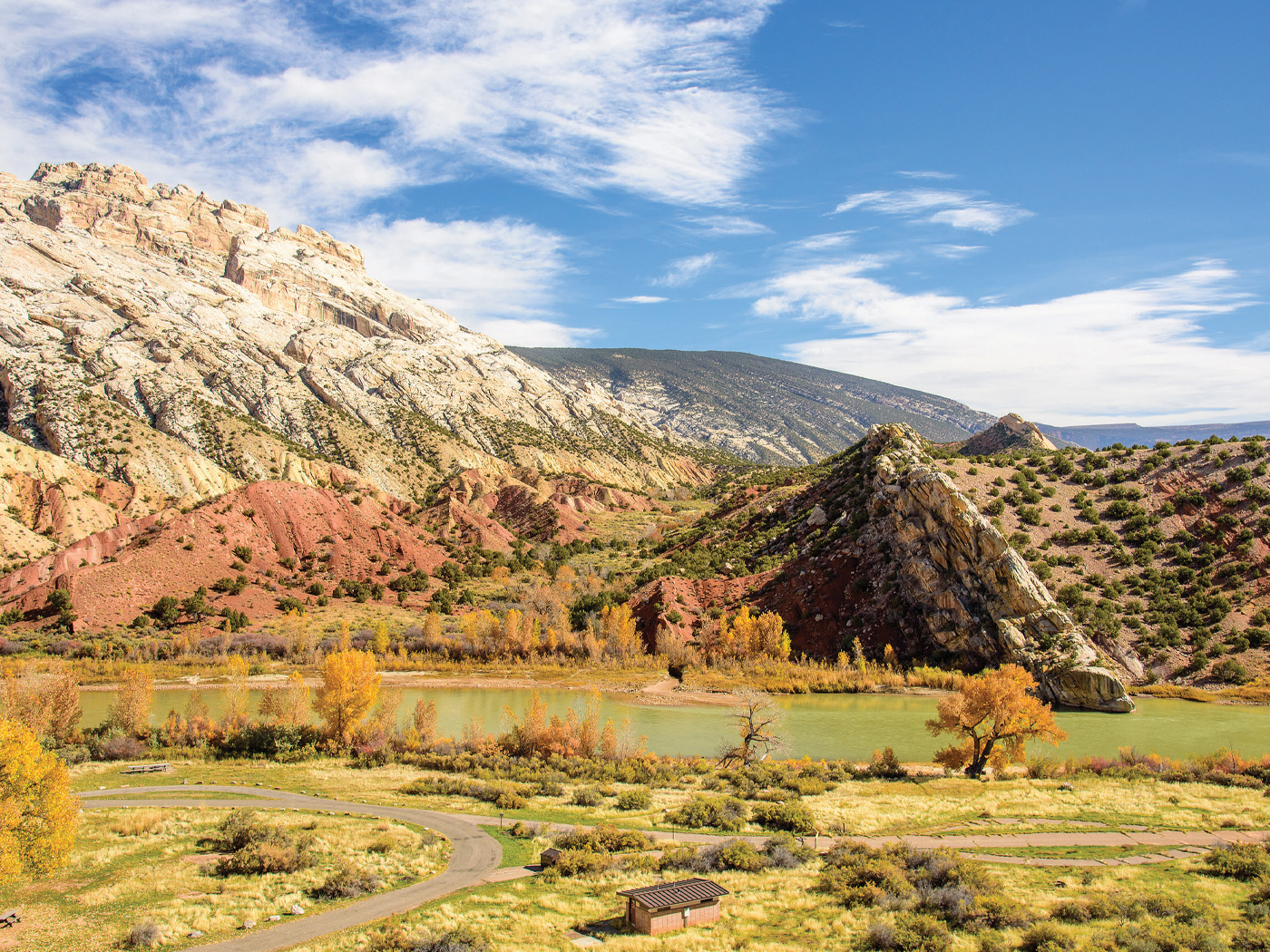Horses only 15 inches high, 141 tree species in a single acre of tropical rain forest—what spectacular variety we see among living things, both variation within kind and the stupendous number of different kinds. Most of us are awed by the spectacular variation in color, size, form, features, and function we see both within and among the incredible diversity of living things that grace our planet. Why so much variation?
To the first scientists of the modern era, the answer seemed obvious. After all, we normally associate lavish use of color and form, subtle variations on a theme, and prolific production with the work of master artists and craftsmen. Wouldn't we expect lavish beauty and abundance from the Author of Life, whose creative talents we so feebly reflect?
This incredible diversity also made a striking impression on the unsettled young mind of an amateur naturalist as he sailed around the world aboard H.M.S. Beagle.1
Although Charles Darwin was aware of the evidence of creation, what struck him more was the awful waste in nature, the continual struggle for survival that the over-abundant offspring of each kind faced in the competition for limited food and resources. Failing to understand this struggle for survival as the corruption of an originally harmonious created order, Darwin elevated the survival of the fittest to the place of Creator instead: "… from the war of nature, from famine and death … the production of higher animals directly follows." That is what Darwin wrote in summarizing his concept of the Origin of Species by Means of Natural Selection.2
Natural selection was an instant success as a new religion (a "religion without revelation," to use Julian Huxley's phrase), and it had a revolutionary impact on our cultural view of man and society ("Social Darwinism"). Indeed, the well-known historian-philosopher, Will Durant, said in a recent interview that the present pagan era in human history began in 1859 with the publication of Darwin's Origin. 3
But in spite of its success as a new cultural religion, Darwinism failed completely as a scientific explanation for origins. Darwin, a much more astute scientist than most of his devotees, recognized three major problem areas himself: perfection of adaptation, the origin of variation, and the fossil evidence.
Consider the eye, for example, "with all its inimitable contrivances," as Darwin called them, which can admit different amounts of light, focus at different distances, and correct spherical and chromatic aberration. Consider also the splitting of pigment molecules that must be coupled to nerve impulse initiation, and consider that none of these impulses has any meaning apart from millions of neurons integrated into interpretive centers in the brain. Each of these features of optic structure and function is a complex trait itself, and none of these separate components would have any meaning or "survival value," until nearly all were put together in a functioning whole of compounded complexities. No wonder Darwin wrote: "To suppose that the eye, … could have been formed by natural selection, seems, I freely confess, absurd in the highest degree."
Yet compound traits whose separate parts would have no survival value are the rule, not the exception. It is easy to multiply examples: the sending and the receiving-interpreting parts of echo location mechanisms in porpoises and platypuses, umbilical vein and ductus venosus relationships in fetal blood circulation, enolase/triose isomerase/2,3-diphosphoglyceric acid in glycolytic metabolism, etc., etc. (No doubt you can think of better examples!)
In such compound traits, the whole is greater by far than the sum of its parts. Structures are given properties of organization they do not have and could not develop on their own—a phenomenon we normally recognize as the result of creative activity. By means of creative design and organization, for example, phosphorus, copper, and glass have been given the ability to talk, to tell jokes, report the news, and to do all the other things we associate with television.
Living things also have properties of organization that clearly transcend the potential of their parts. As Harvard's Richard Lewontin recently summarized it, organisms " … appear to have been carefully and artfully designed." 4 He calls the "perfection of organisms" both a challenge to Darwinism and, on a more positive note, "the chief evidence of a Supreme Designer."
Once a complex trait or combination has originated, however, it is easy to cite, and even to elaborate in great detail, its "fitness" or survival value. (This sport is sometimes considered the epitome of academic erudition!) But how did the trait originate whose fitness value is being considered?
Darwin thought it came from the "direct and indirect action of the conditions of life," and "from use and disuse." Thus Darwin, just like Lamarck (with whom he is often falsely contrasted), believed that the giraffe's long neck originated by stretching for leaves in trees. The enlarged neck, he thought, produced more "pangenes" that allowed this acquired trait to be inherited.
The discovery of Mendelian genetics rendered classic Darwinism untenable at the turn of the century, and the neo-Darwinists turned from pangenes to mutations to explain origins. But orthodox textbook extrapolation from mutation-selection to evolution failed the mathematical tests of the 1960's, and the harm With hope instead in "hopeful monsters," Harvard's Stephen Gould says that scientists of the 1980's harmful effects of mutational load (genetic burden) turned away other evolutionists in the 1970's. 5 With hope instead in "hopeful monsters," Harvard’s Stephen Gould says that scientists of the 1980’s are forced to ask, "is a new and general theory of evolution emerging?" 6
But the failures of pagenes + selection, of mutations + selection, and of hopeful monsters + selection does not mean that there is anything wrong with the concept of natural selection itself. In fact, natural selection works fine—if a species has great genetic variability "built right into it" by plan, purpose, and special creation. To use Lewontin's example, plants growing in a region that becomes progressively drier can respond by developing deeper roots and a thicker waxy cuticle on their stems and leaves, "but only if their gene pool contains genetic variation for root length or cuticle thickness." This is why Lewontin can also say: "Whereas greater relative adaptation leads to natural selection, natural selection does not necessarily lead to greater adaptation." If adaptations originated in special acts of creation, then natural selection can help to explain how the created kinds multiplied and filled the earth in such tremendous ecologic and geographic variety.
As a matter of little-known fact, Edward Blyth published the theory of natural selection 24 years before his fellow Englishman, Charles Darwin.7 Why isn't Blyth's name a household word? Why is he not buried in Westminister Abbey? Perhaps it is simply because Blyth was a creationist, and he made no more out of natural selection than could be observed and supported scientifically. The Darwinists, however, made natural selection (and pangenes) the basis of a new religion, a "religion without revelation."
The Darwinian Revolution of 1859 was not a scientific one (the science had been taken care of 24 years earlier); it was religious and philosophical. In fact, Darwinian zealots extrapolated natural selection into scientific absurdity.
The fossil evidence makes the point most clearly. Darwin, the same astute scientist who recognized both pangenes and complex adaptations as "difficulties with the theory," called the fossil evidence" perhaps the most obvious and serious objection" to extrapolating evolution from natural selection. Given the paucity of fossil data in his time, Darwin tried to blame the conflict between his theory and the fossil facts on faults with the facts—"the imperfection of the geologic record."
"Well, we are now about 120 years after Darwin," writes David Raup of Chicago's famous Field Museum," and the knowledge of the fossil record has been greatly expanded."8 Did this wealth of new data produce the "missing links" the Darwinists hoped to find? " … ironically," says Raup, "we have even fewer examples of evolutionary transition than we had in Darwin's time. By this I mean that some of the classic cases of darwinian [sic] change in the fossil record, such as the evolution of the horse in North America, have had to be discarded or modified as a result of more detailed information." Rather than forging links in the hypothetical evolutionary chain, the wealth of fossil data has only served to sharpen the boundaries between the created kinds. As Gould says, our ability to classify both living and fossil species distinctly and using the same criteria "fit splendidly with creationist tenets." "But how," he asks, "could a division of the organic world into discrete entities be justified by an evolutionary theory that proclaimed ceaseless change as the fundamental fact of nature?" 9
" … we still have a record which does show change," says Raup, "but one that can hardly be looked upon as the most reasonable consequence of natural selection." The change we see is simply variation within the created kinds, plus extinction. In fact, Raup recognizes that the forms of life which died out seem every bit as fit to survive as those that did survive. The losers, he argues, were not slowly lost or transformed by "survival of the fittest"; rather, they succumbed to the whims of chance or catastrophe, a sort of "survival of the luckiest." Creationists who have long accepted the devastating effects of a global flood cannot help but be amused that the facts have finally generated interest among evolutionists in "catastrophe theory" and in "neo-catastrophism."
Darwinian evolution was at odds with the facts of adaptation, genetics, and paleontology right from the start. So, what was the basis for this revolutionary idea and its wildfire acceptance? In the words of Stephen Gould and Niles Eldredge: "Phyletic gradualism [gradual evolution] was an a priori assertion from the start—it was never ‘seen’ in the rocks; it expressed the cultural and political biases of nineteenth century liberalism."10 Karl Marx found it interesting to see how easily English scientists saw the "winner-take-all" cut-throat competitiveness of nineteenth century England reflected in (and perhaps justified by) "survival of the fittest" as a law of nature. In Darwinian thinking, even the evolution of cooperation can proceed only over the dead bodies of those that do not cooperate.
Creationists recognize the waste of over-reproduction and the bitter struggle for survival in our present world order. But, unlike evolutionists, creationists do not see these processes as a means of creation. Rather, they reflect the corruption of the created order that followed man's sin. In fact, it was the violence that filled the earth which brought on the judgment and cleansing of the Flood (Gen. 6:5).
Against this background of creation, corruption, and catastrophe, natural selection has several positive roles to play in our present world. For one thing, natural selection acts as a brake to slow down the decay in genetic quality caused by mutations. For another, selection (along with genetic drift and habitat choice) helps each created kind to maintain a variety of specialized subtypes in diverse and changing environments. In Darwin's words, natural selection, although it fails to explain the "origin of species," does help to explain "the preservation of favored races in the struggle for life" (the second half of his book's title).
As Lewontin put it, " … natural selection over the long run does not seem to improve a species' chance of survival but simply enables it to 'track,' or keep up with, the constantly changing environment." The observed conservative function of natural selection is not nearly so glamorous as the hypothetical, creative function assigned to it by evolutionists, but it really is an important, and scientifically verifiable, role. Natural selection is not bad science, even though it makes bad religion.
Raup was no doubt being too harsh when, condemning with faint praise, he wrote: "So natural selection as a process is okay. We are also pretty sure that it goes on in nature although good examples are surprisingly rare." What would Darwin think if he knew that creationists were now finding his theory more useful than some leading evolutionists are?
Still, for creationists, natural selection and the struggle for survival will come to an end when Christ returns and "the wolf and the lamb will lie down together, … and they will not hurt or destroy, … for the earth will be full of the knowledge of the Lord as the waters cover the sea" (Isaiah 1:1).
REFERENCES
1. Asimov, Isaac. "The Voyage of Charles Darwin," TV Guide, Jan. 26, 1980, pp. 13-14.
2. Darwin, Charles, The Origin of Species, New York: Washington Square Press, 1963, P. 470. (First ed. 1859.)
3. Durant, Will, "Historian Will Durant: We Are in the Last Stage of Pagan Period." an article in The Daily Californian. El Cajon, CA, for April 8, 1980, P. 5 B, by Rogers Worthington of The Chicago Tribune.
4. Lewontin, Richard, "Adaptation," Scientific American. V. 239. No. 3, 1978, pp. 212-230.
5. For fuller discussion and documentation, see Gary Parker. Creation: The Facts of Life. San Diego: CLP Publishers, 1980.
6. Gould, Stephen, "Is a New and General Theory of Evolution Emerging." Paleobiology, V. 6, No. 1. 1980. pp. I 1 9-130.
7. Eiseley, Loren, Darwin and the Mysterious Mr. X, New York: Dutton Publishing Co., 1979, (See also the book review by Wendell Cochran, "Evolution and Catastrophe." Geotimes. V. 24. No. 10. 1979. P. 17.)
8. Raup, David, "Conflicts Between Darwin and Paleontology." Field Museum of Natural History Bulletin. V. 50. No. 1. 1979, pp. 22-29.
9. Gould, Stephen, "A Quahog is a Quahog." Natural History, V. 88, No. 7. 1979, pp. 18-26.
10. Gould, Stephen, and Eldredge, Niles, "Punctuated Equilibria: The Tempo and Mode of Evolution Reconsidered." Paleobiology, V. 3, No. 2, 1977, P. 115.
*Dr. Gary E. Parker is a Research Associate in Bioscience at the Institute for Creation Research and teaches Genetics and Biosystematics at Christian Heritage College, El Cajon, CA. He is the senior author of several programmed instruction textbooks in biology.


















